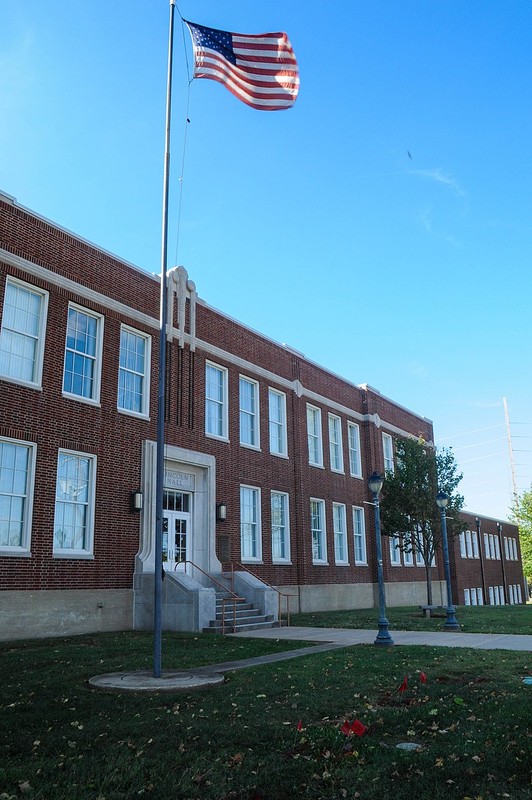Lincoln School
Introduction
Text-to-speech Audio
The former Lincoln School is the only school built during the era of segregation that is still standing in the city of Springfield. Erected in 1931, it is now a part of Ozarks Technical Community College and known as Lincoln Hall. The school operated for 24 years and was also an important social center for the local African American community. Lincoln School is also notable for being the only school remaining in Missouri that received a grant from the Rosenwald Foundation, which donated money to support over five thousand public schools and other buildings around the country from 1917 to 1948, the vast majority of which supported African American education in the South. In terms of architecture, the building is a good example of open-plan school design, which allowed for increased ventilation and natural light. Architect William B. Ittner, who designed the school, pioneered this type of design. Lincoln School was added to the National Register of Historic Places in 2000.
Images
Constructed in 1931, the former Lincoln School is the only school built for African-Americans remaining in Springfield. It is now called Lincoln Hall and is a part of the Ozarks Technical Community College.

Backstory and Context
Text-to-speech Audio
By the 1920s, the state of African-American schools in Missouri was very poor as a result of the state's segregated school system. According to a 1928 report, they suffered from unfair and ineffective laws and disinterest from school officials. Some rural African-American communities didn't even have schools because school districts were not required to provide schools if there were fewer than 15 Black children in the district.
To help remedy this situation, the Rosenwald Foundation announced in July 1929 it would donate $20,000 to the Missouri's rural school program. In March of the next year, the foundation donated $6,000 to help build Lincoln School, which Ittner had designed by then. Construction got underway in July and was completed the next year. As alluded to above, the school became an important social center for the African-American community, who used it for a variety of activities including dances, talent shows, plays, and fashion shows. Boy and Girl scout troops used it as well and the school hosted a traveling concert program in 1932. The library was open to the community two nights a week and, notably, was the first Carnegie library branch in the city (African-Americans couldn't use the Carnegie library, so the Rosenwald Foundation contacted Carnegie officials and requested that library become a Carnegie branch).
It should also be noted that the Rosenwald Foundation was largely responsible for improving educational opportunities for African Americans between World War I and II. Many future notable figures such as Congressman John Lewis and Maya Angelou attended Rosenwald schools.
The segregation of Missouri schools ended in 1954 and the last senior class at Lincoln School graduated in 1955. It then became an integrated school called Eastwood Junior High School, which closed in 1962. The district's technical school called the Graff Vocational and Technical School moved into the building. How long it operated is unclear but the Ozarks Technical Community College acquired the building 1991.
Sources
"Julius Rosenwald Fund (1917-1948)." Amistad Research Center. Accessed May 12, 2022. http://amistadresearchcenter.tulane.edu/archon/?p=creators/creator&id=154.
Lederer, Dr. Katherine et al. "Lincoln School." National Park Service - National Register of Historic Places Nomination Form. May 31, 2000. https://catalog.archives.gov/OpaAPI/media/63818913/content/electronic-records/rg-079/NPS_MO/00000508.pdf.
"Lincoln Hall: A 90-year legacy of education." Ozarks Technical Community College. Accessed May 12, 2022. https://news.otc.edu/lincoln-hall-and-african-american-education.
Wikimedia Commons: https://commons.wikimedia.org/wiki/File:Lincoln_School,_Springfield_MO.jpg
